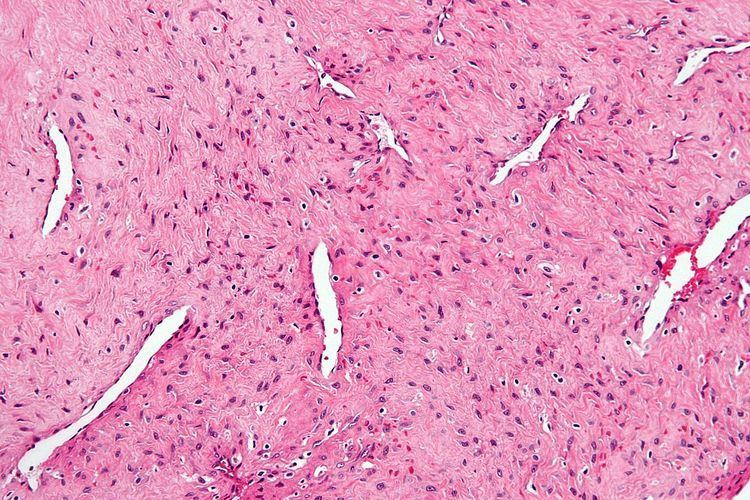DiseasesDB 32229 eMedicine ent/470 | MedlinePlus 001572 | |
 | ||
Nasopharyngeal angiofibroma (also called juvenile nasopharyngeal angiofibroma) is a histologically benign but locally aggressive vascular tumor that grows in the back of the nasal cavity. It most commonly affects adolescent males. Patients with nasopharyngeal angiofibroma usually present with one-sided nasal obstruction and recurrent bleeding.
Contents
Signs and symptoms
Diagnosis
If nasopharyngeal angiofibroma is suspected based on physical examination (a smooth vascular submucosal mass in the posterior nasal cavity of an adolescent male), imaging studies such as CT or MRI should be performed. Biopsy should be avoided as to avoid extensive bleeding since the tumor is composed of blood vessels without a muscular coat.
Antral sign or Holman-Miller sign (forward bowing of posterior wall of maxilla) is pathognomic of angiofibroma.
DSA (digital subtraction angiography) of carotid artery to see the extension of tumors and feeding vessels
Differential diagnosis
Treatment
Treatment for Nasopharyngeal angiofibroma (JNA) is primarily surgical. The tumor is primarily excised by external or endoscopic approach. Medical treatment and radiation therapy are only of historical interest.
External approaches:
Endoscopic approach is an excellent tool in primary and recurrent JNA, it allows visualisation and precise removal of the lesion. Preoperative embolisation of tumour may be of some use in reducing intraoperative bleeding.
Direct visualization is not common.
Prognosis
Prognosis for nasopharyngeal angiofibroma is favorable. Because these tumors are benign, metastasis to distal sites does not occur. However, these tumors are highly vascularized and grow rapidly. Removal is important in preventing nasal obstruction and recurrent epistaxis. Mortality is not associated with nasopharyngeal angiofibroma.
